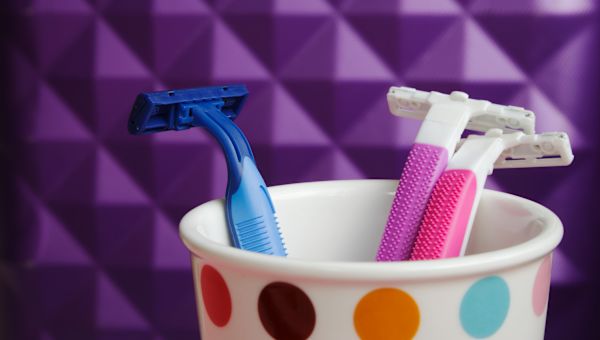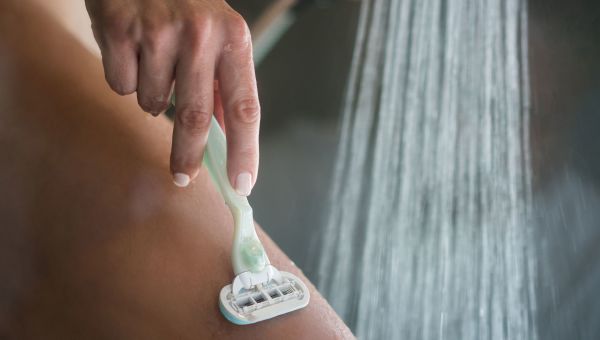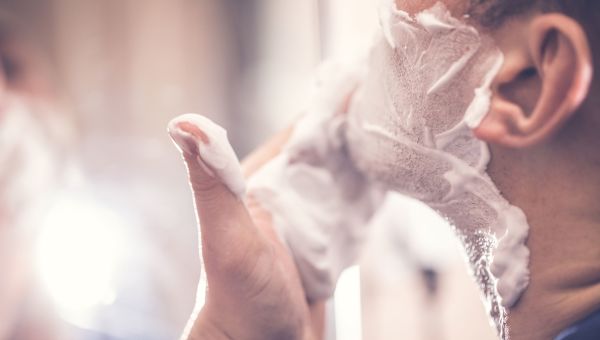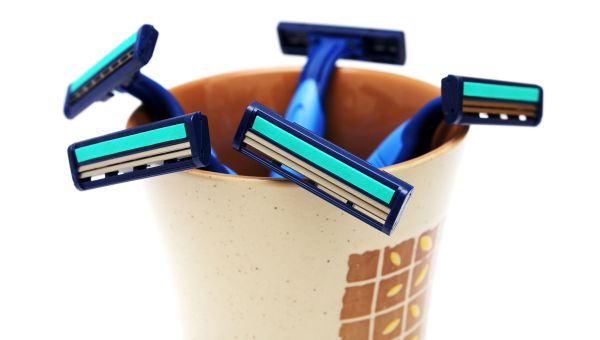5 foolproof tips for smooth shaving
With a few healthy habits, you can steer clear of cuts and razor burn.
Updated on March 13, 2025

Shaving is a part of most hygiene routines. In fact, it’s one of the most popular ways to remove hair. But have you ever cut yourself shaving or come away with razor burn? Many people have. But that doesn’t mean shaving has to be intimidating or that it has to end in cuts or irritation.
Whether you’re lathering up to shave your beard, your underarms, or your legs, here’s… Show More
Shaving is a part of most hygiene routines. In fact, it’s one of the most popular ways to remove hair. But have you ever cut yourself shaving or come away with razor burn? Many people have. But that doesn’t mean shaving has to be intimidating or that it has to end in cuts or irritation.
Whether you’re lathering up to shave your beard, your underarms, or your legs, here’s a simple guide to this common grooming practice.
Show Less
Make sure your skin is wet
The best time to shave is after you’ve been in the shower for about 10 minutes. The warm water softens your skin and allows your pores to open—while softening the hair, too—which ultimately leads to a better shaving session. Try to shave toward the end of your shower or bath, or as soon as you get… Show More
The best time to shave is after you’ve been in the shower for about 10 minutes. The warm water softens your skin and allows your pores to open—while softening the hair, too—which ultimately leads to a better shaving session. Try to shave toward the end of your shower or bath, or as soon as you get out. If you have time, exfoliating your skin with a bath scrub or loofah prior to shaving can help keep dead skin cells from clogging your razor, which can make it less effective. Rinse your razor after each swipe, too.
Show Less
Always use a cream or gel
Ordinary body wash or soap can be too harsh when you’re shaving and may leave your skin dry and flaky post-shave. Invest in a cream or gel that’s specifically meant for shaving, so your skin remains soft when you’re done. You could even use hair conditioner or body oil in a pinch.
If you have… Show More
Ordinary body wash or soap can be too harsh when you’re shaving and may leave your skin dry and flaky post-shave. Invest in a cream or gel that’s specifically meant for shaving, so your skin remains soft when you’re done. You could even use hair conditioner or body oil in a pinch.
If you have sensitive skin, be sure to look for gentler products; they should say so on the bottle. Milder, fragrance-free options are less likely to leave your skin irritated and dry, like those loaded with concentrated scents can.
Show Less
Shave in the right direction
Want to prevent pesky (and sometimes painful) razor burns, ingrown hairs, and bumps? You may need to shave in the direction your hair grows. Doing so lowers the risk of nicks and cuts, even though it may not yield as close a shave as going “against the grain.”
If you find that shaving in the same… Show More
Want to prevent pesky (and sometimes painful) razor burns, ingrown hairs, and bumps? You may need to shave in the direction your hair grows. Doing so lowers the risk of nicks and cuts, even though it may not yield as close a shave as going “against the grain.”
If you find that shaving in the same direction your hair grows isn’t helping you achieve your desired smoothness, you can cautiously try shaving against the grain. Just be sure not to try it until you’ve given your skin a chance to soften up with a few minutes in the shower or bath. It’s also important to continue reapplying shaving gel or cream when you do this to keep the area lubricated.
Show Less
Make sure you dispose of razors when it’s time—and store them in a dry place
It’s best to replace blades or disposable razors every five to seven shaves since dull blades increase the risk of cuts. A good rule of thumb? If you notice gunk or hairs in your razor that won’t rinse out when you run it under a stream of water, it’s time to replace.
Keep razors in a dry place to… Show More
It’s best to replace blades or disposable razors every five to seven shaves since dull blades increase the risk of cuts. A good rule of thumb? If you notice gunk or hairs in your razor that won’t rinse out when you run it under a stream of water, it’s time to replace.
Keep razors in a dry place to prevent the growth of bacteria. Try storing them somewhere other than the shower or sink, since both areas are moisture-rich. Grab a cup or glass and set your razor upright outside of your shower.
Show Less
Shave carefully if you have breakouts
If you’re experiencing acne where you plan to shave, take special care not to irritate the area further. In addition to following general shaving best practices, make sure to use a sharp blade and shave very lightly, using gentle strokes to prevent nicks. And avoid trying to shave off the acne,… Show More
If you’re experiencing acne where you plan to shave, take special care not to irritate the area further. In addition to following general shaving best practices, make sure to use a sharp blade and shave very lightly, using gentle strokes to prevent nicks. And avoid trying to shave off the acne, which will only make the problem worse. For men, the face is an acne-prone area, so beware when you’re shaving your beard.
Show Less
Cleveland Clinic. Tips for a Smooth Shave Every Time. February 17, 2023.
American Academy of Dermatology Association. Hair Removal: How to Shave. Accessed March 13, 2025.
American Academy of Dermatology Association. Skin Care Tips for Men. Accessed March 13, 2025.
Cleveland Clinic. Shaving vs. Waxing: What’s Better for Your Skin? August 30, 2024.
Gilette: Face Shaving Tips: Against the Grain. Accessed March 13, 2025.
More On


video

article

slideshow


video


video
